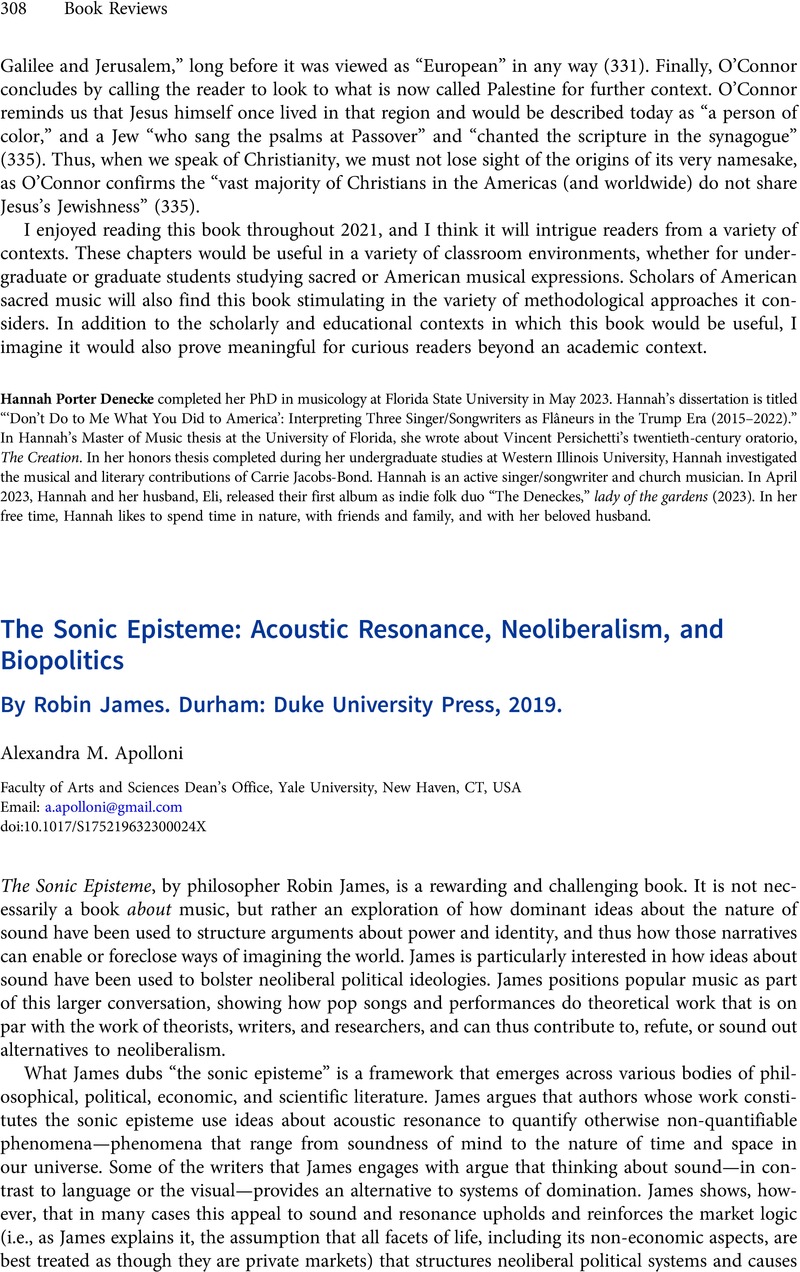No CrossRef data available.
Published online by Cambridge University Press: 06 September 2023

1 Attali, Jacques, Noise: The Political Economy of Music (Minneapolis: University of Minnesota Press, 1985)Google Scholar.
2 See Cavarero, Adriana, For More than One Voice: Toward a Philosophy of Vocal Expression, trans. Kottman, Paul (Stanford, CA: Columbia University Press, 2005)CrossRefGoogle Scholar; Evans, Fred, The Multivoiced Body: Society and Communication in the Age of Diversity (New York: Columbia University Press, 2009)CrossRefGoogle Scholar; and Rancière, Jacques, Disagreement: Politics and Philosophy, trans. Rose, Jacqueline (Minneapolis: University of Minnesota Press, 2004)Google Scholar.
3 Havis, Devonya, “Now, How Do You Sound? Considering a Different Philosophical Praxis,” Hypatia 29, no. 1 (2014): 237–52CrossRefGoogle Scholar.
4 Weheliye, Alexander G., Habeas Viscus: Racializing Assemblages, Biopolitics, and Black Feminist Theories of the Human (Durham, NC: Duke University Press, 2014)Google Scholar and Phonographies: Grooves in Sonic Afro-Modernity (Durham, NC: Duke University Press, 2005).
5 Barad, Karen, Meeting the Universe Halfway: Quantum Physics and the Entanglement of Matter and Meaning (Durham, NC: Duke University Press, 2007)CrossRefGoogle Scholar; Bennett, Jane, Vibrant Matter: A Political Ecology of Things (Durham, NC: Duke University Press, 2009)Google Scholar; Grosz, Elizabeth, Chaos, Territory, Art: Deleuze and the Framing of the Earth (New York: Columbia University Press, 2008)Google Scholar; Grosz, Elizabeth, Nick of Time: Politics, Evolution, and the Untimely (Durham, NC: Duke University Press, 2004)Google Scholar.
6 Crawley, Ashon, Blackpentecostal Breath: The Aesthetics of Possibility (New York: Fordham University Press, 2016)CrossRefGoogle Scholar; Sharpe, Christina, In the Wake: On Blackness and Being (Durham, NC: Duke University Press, 2016)Google Scholar.
7 McKittrick, Katherine, Demonic Grounds (Minneapolis: University of Minnesota Press, 2006)Google Scholar and “Mathematics Black Life,” Black Scholar 44, no. 2 (Summer 2014): 16–28.